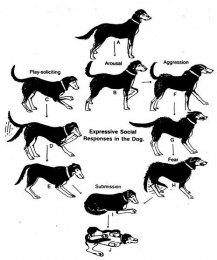Effective dog training

To communicate clearly and consistently with your dog, you need to understand how she learns. Dogs learn through the immediate consequences of their behavior. The nature of those consequences determines how they’ll behave in the future. Dogs, like other animals (people included), work to get good things and avoid bad things in life. If a behavior results in something rewarding-like food, a good belly rub, playtime with dog buddies or a game of fetch with her pet parent-your dog will do that behavior more often. On the other hand, if a behavior results in an unpleasant consequence-like being ignored or losing things she finds rewarding-she’ll do that behavior less often.
If You Like the Behavior, Reward It
Some training methods use punishment, like leash corrections and scolding, to discourage dogs from doing everything except what you want them to do. Other methods cut right to the chase and focus on teaching dogs what you do want them to do. While both tactics can work, the latter is usually the more effective approach, and it’s also much more enjoyable for you and your dog. For example, you can easily use treats, games and praise to teach your dog to sit when people approach during walks in the neighborhood. If your dog is sitting, she won’t be dragging you toward the people, jumping up when they get close enough, mouthing on their arms and legs, and so on. That’s pretty efficient training-no pain or intimidation needed. Alternatively, you could grab your dog’s leash and jerk her to the ground every time she jumps up to greet people, and you’d most likely get the same effect in the end-no more jumping up. But consider the possible fallout:
- Your dog might decide that people are scary since she gets hurt whenever she tries to greet them-and she might try to drive them away by growling or barking the next time they approach.
- Your dog might decide that YOU are scary since you hurt her whenever she tries to greet people.
Continued
If you can teach your dog polite manners without hurting or frightening her, why not do it? Rather than punishing her for all the things you don’t want her to do, concentrate on teaching your dog what you do want her to do. When your dog does something you like, convince her to do it again by rewarding her with something she loves. You’ll get the job done without damaging the relationship between you and your best friend.
Related posts:

 Training your dog to do advanced tricks like finding something or bringing their food bowl can be done with just 10 minutes a day and some clicker training. It’s…
Training your dog to do advanced tricks like finding something or bringing their food bowl can be done with just 10 minutes a day and some clicker training. It’s… MARY ISENHOUR-LONG Owner - Trainer Photo by Stewart Event Images About The Trainer The phrase, “gone to the dogs”, is certainly an appropriate one to describe my…
MARY ISENHOUR-LONG Owner - Trainer Photo by Stewart Event Images About The Trainer The phrase, “gone to the dogs”, is certainly an appropriate one to describe my… 6 Principles of Successful Training 1. Be Consistent: Apply the same rules and the same words all the time. 2. Be Concise: Give your command just once. Repetition…
6 Principles of Successful Training 1. Be Consistent: Apply the same rules and the same words all the time. 2. Be Concise: Give your command just once. Repetition… Cesar Millan Cesar is a best-selling author, public speaker, and internationally acclaimed star of the TV shows “Dog Whisperer with Cesar Millan, ” “Leader of the…
Cesar Millan Cesar is a best-selling author, public speaker, and internationally acclaimed star of the TV shows “Dog Whisperer with Cesar Millan, ” “Leader of the… At Monument Dog Training, we believe that change is always possible . We regularly resolve aggressive behavioral issues, even with dogs who have been written off…
At Monument Dog Training, we believe that change is always possible . We regularly resolve aggressive behavioral issues, even with dogs who have been written off…